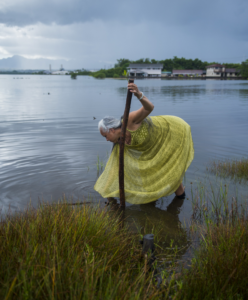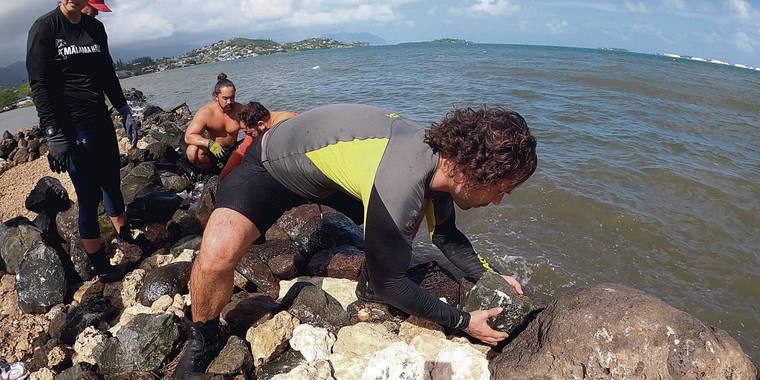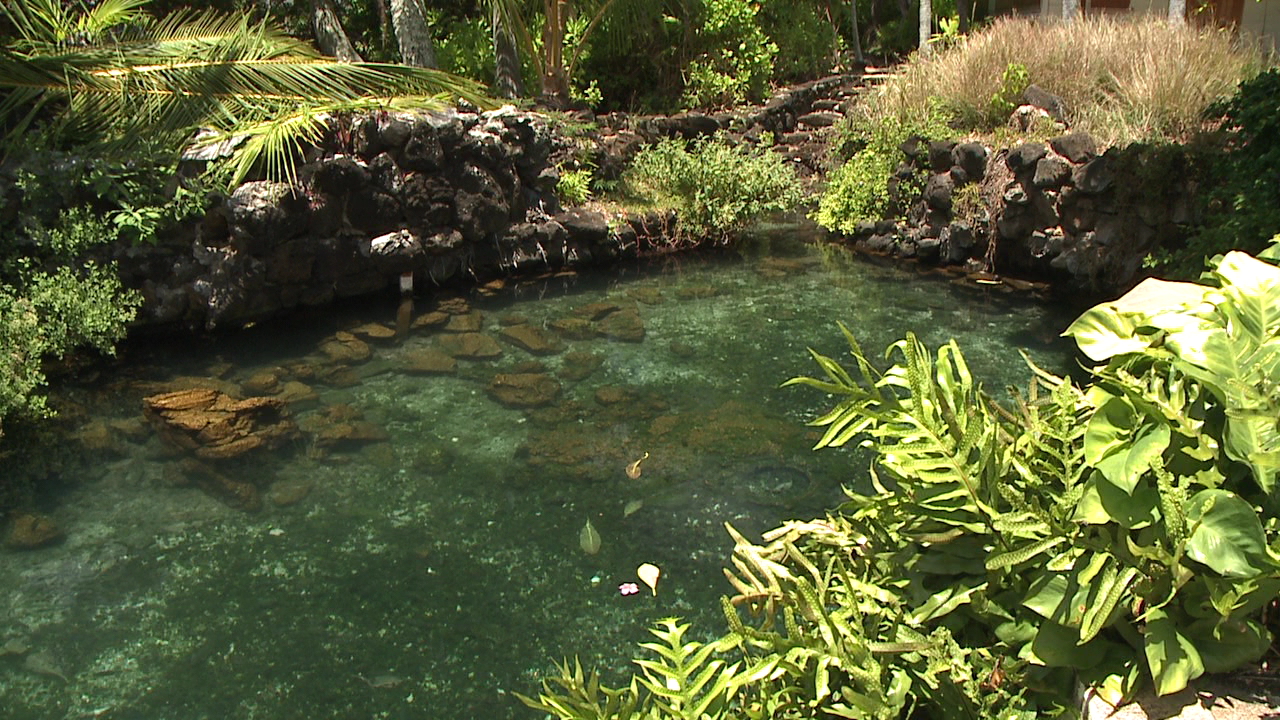Historic Hawai‘i Foundation presents
A Talk Story with the filmmaker and
Loko Iʻa Stewards
Wednesday, October 27, 2021
From 5:00-6:15PM
Virtual, via Zoom
Cost: Free
View the video replay below of the talk story with the film’s director and community stewards of three O‘ahu fishponds: Kanewai Loko Iʻa, Paʻaiau Loko Iʻa, and Huilua Loko Iʻa, below.
RESOURCES for Stewarding Loko Iʻa
Huilua Loko Iʻa, Kahana
Hoʻāla ‘Āina Kūpono
Friends of Kahana
Email: kahiau@hoalaainakupono.org
Kānewai Spring & Kalauha‘iha‘i Fishpond, Kuli’ou’ou
Website: https://maunaluafishpond.org/
Loko Pā`aiau Fishpond, ‘Aiea
Facebook Page: https://www.facebook.com/lokopaaiau/
Website: https://www.aieacommunity.org/projects/loko-paaiau-fishpond/
Waikalua Loko Iʻa, Kāne‘ohe
Website: https://www.thepaf.org/waikalua/
Anne Marie Kirk: Blue Crater Media
Several of Anne Marie’s films are available on her website: http://www.bluecratermedia.com/movies.html
Kai Piha Kaʻahele ma Waikīkī
Ola Na Iwi
Pacific Clues
Art Hunter
Sounds of Hawaiʻi
Choices
Stories to Tell
Ke ‘Imi Noi’i
View the film, Kai Piha: Nā Loko Iʻa
SUMMARY: For centuries, loko iʻa, or fishponds, were a vital part of the Native Hawaiian food system, connecting freshwater sources to the ocean, using rock-wall enclosures to raise and eventually harvest fish. In recent decades, there has been a resurgence of this indigenous way of aquafarming. Kai Piha: Nā Loko Iʻa looks at how four fishponds on Oʻahu are being restored.
Loko i‘a are historical evidence to the legacy of abundance throughout our islands — abundance of freshwater flowing to the ocean, abundance of healthy coastal fisheries and thriving human communities that lived independently on isolated islands in the middle of the Pacific Ocean.
The people power required to construct loko i‘a and the intergenerational environmental knowledge required to manage them necessitated stable living conditions and social structures. These are sophisticated systems that continue to teach many lessons to our community. They also serve as a testament and inspiration of the innovation and ingenuity of our community and its response to resource management, food security and sustainability.
We look forward to a rich discussion about the importance of loko i‘a and their potential as a transformative model in a multitude of areas:
- Cultural resource stewardship;
- Hawaiian construction;
- Food source;
- Communal activity;
- Use as educational tool;
- Perpetuator of indigenous knowledge;
- Resilience builder;
- Climate change mitigation model
“They’re blowing around us right now. You can see them in the wind. How the water ripples that comes to greet us. I think they’ve always been here waiting for us. Kūpuna have told me this beautiful proverb, ‘The ancestors are waiting at the mouth of the river for the descendants to return.’ And in this case the descendants are all of us together with the Navy, to come together to restore peace and abundance to this place.”
~Kehaulani Lum, Ali‘i Pauahi Hawaiian Civic Club, community steward of Paʻaiau Loko Iʻa in ʻEwa
“We have documented over 488 of these ponds that were built over 800 years on the 8 major Hawaiian Islands. We have maybe 10 to 15 percent of them left. They’re on the verge of vanishing from the landscape in our lifetime. We need to hold onto this because they are our connection to the past. And that wisdom is still something that empowers us today and nourishes us today as we move into the 21st century.”
~Herb Lee Jr., Executive Director. Pacific American Foundation, stewards of the Waikalua Loko Iʻa in Kāne‘ohe
PANELISTS

Ann Marie Kirk, Filmmaker and Moderator: Ann Marie is an award-winning filmmaker with the Hawaiʻi State Department of Education. She also has her own production company, Blue Crater Media. With over 30 years of experience, her films touch on numerous aspects of Hawaiian culture, people, and life in Hawaiʻi.

Chris Cramer directs the Maunalua Fishpond Heritage Center at Maunalua, O’ahu. He was mentored by the last generation of kūpuna that stewarded Hawaii’s largest fishpond. He co-founded the organization in 2007, when remaining Hawaiian fishponds in the region were being auctioned. In 2010 he led the effort to pass Act 210 to protect publicly owned Hawaiian fishponds from sale and destruction. Alongside fellow board members, he currently serves the community through restoration and education programs at Kānewai Spring and Kalauha‘iha‘i Fishpond.

Kehaulani Lum is the President of Ali‘i Pauahi Hawaiian Civic Club, a Native Hawaiian organization founded over 40 years ago by elders who heard the call to preserve traditional cultural practices, education, and sacred site restoration. Her kuleana was passed down by her late maternal Grandmother, Harriet Mākia Awana O’Sullivan, a retired DOE teacher and esteemed community leader, who brought her into the club at a young age. A member of the ‘Aiea Community Association, in the ahupua`a where her family has stewarded ancestral lands for over 100 years, Kehaulani feels blessed to lead Ali‘i Pauahi’s effort to restore the 400-year-old Loko i`a Pā`aiau, the last remaining royal fishpond in Pu`uloa, built by O`ahu Queen Kalanimanuia.

Kahiau Wallace, Huilua Loko Iʻa, hails from Kahana, Ko‘olauloa, O‘ahu. Kahiau is the Education Manager at Kākoʻo ʻŌiwi and a board member of Hōala ʻĀina Kūpono.
Historic Hawai‘i Foundation recognitions:
Waikalua Loko I’a, Kāne‘ohe, O‘ahu, received a Preservation Commendation Award at the 2011 Preservation Honor Awards. Recognition went to Mr. Herb Lee, Jr.; Mr. Clyde Namaru and the Waikalua Loko Fishpond Preservation Society.
Under the direction and leadership of Mr. Lee, Mr. Namaru and dedicated volunteers, the Waikalua Loko Fishpond Preservation Society transformed a neglected and overgrown historic property into a working pond and a vibrant center of outdoor education and cultural renewal that touches the lives of thousands of participants a year. These accomplishments provide an example of simultaneously achieving historic preservation, experiential learning, and cultural enrichment.
E Ala Pa‘aiau Fishpond Restoration, ‘Ewa, O‘ahu, received a Preservation Commendation Award at the 2018 Preservation Honor Awards. Partners in the project included Naval Facilities Engineering Command (NAVFAC) Hawai‘i; Ali‘i Pauahi Hawaiian Civic Club; ‘Aiea Community Association and Ku‘uaina Ulu ‘Auamo.
The project was a community effort to restore one of the last remaining loko i‘a (fishponds) in the Keawalau o Pu‘uloa area. By working together to remove invasive plants and restore the fishpond’s walls, community stakeholders and neighbors realized they share in common many values and goals. Generational family relationships were also rediscovered. This project not only helped to preserve Loko Pa‘aiau, built more than 600 years ago, it also resulted in a sense of healing and renewal for a community.
Kanewai Spring Preservation, Maunalua, O‘ahu, received a Project Award at the 2019 Preservation Honor Awards. Recognition went to Chris Cramer on behalf of the Maunalua Fishpond Heritage Center. Kanewai Spring was included on the 2015 list of Hawaii’s Most Endangered Historic Places.
The project was a unique example of private, public and community cooperation to save one of Hawaii’s last fresh water springs. It once nurtured the largest fishpond in Hawai‘i, but after years of neglect and abuse, the spring was destined to become a swimming pool and multi-home development. Instead community volunteers led by the Maunalua Fishpond Heritage Center arranged with the owners to rejuvenate the spring, clearing vegetation to release the water. This preservation effort required a huge commitment of time and energy by volunteers who are led by volunteer board members. Now the site offers unique opportunities for teaching Hawaiian culture.




